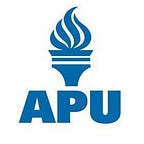How Culture Affects the Efficacy of Colleges and Universities (Part II)
By Dr. Gary L. Deel, Ph.D., J.D.
Faculty Director, School of Business, American Public University
This article is part 2 of a two-part series on higher education culture.
In the first part of this series, we looked at some of the fundamental ways in which higher education culture variables can impact the efficacy of schools and programs, including government support and industry partnerships. Now, we’ll look at a few more dimensions of culture that can affect the success of colleges and universities.
Inter-Institution Competition
A third contributor to education culture is inter-institution competition. Government favoritism aside, schools compete for reputations as the best in their respective fields. This weighs on their curriculum, the work ethic and even on the mission.
Take the example of the Rosen College of Hospitality Management at UCF. A guiding objective of this institution has been to outshine Cornell University’s hotel school as the best in terms of hospitality educational offerings. This has been a stated ambition of the school’s primary benefactor, hotelier Harris Rosen, who attended Cornell in his younger years before rising to prominence as a major operator in Orlando.
As discussed in the first part, “best” can be construed in many ways; some schools look at academic performance while others look at enrollment, value, job placement post-graduation, and other factors. Regardless, it is important to note that this sense of competition extends beyond national boundaries.
American hospitality colleges such as UCF, UNLV and the online hospitality program at APU compete for recognition with well-known international schools such as Hong Kong Polytechnic University. In this sense, educational offerings may be viewed from a “best in class” perspective.
Faculty and Administration Contributions to Educational Culture
A fourth contributor to educational culture is the school’s faculty and administration. Administrators set the priorities and faculty are expected to execute them. A recent and powerful example will illustrate this point.
Several years ago, UNLV set a target to become a Carnegie R1 “very high research activity” institution. This demanded a redoubling of research efforts by the UNLV faculty. More emphasis was placed on the publication of solid research in top tier academic journals.
Faculty Time at Any University Is Typically Split among Research, Teaching and Service
With that in mind, a faculty member’s time at any university is typically split among research, teaching, and service. The relative proportions of each are dictated by the administration and vary among schools. Given that there are only so many hours in a day, a push for more and better research can consequently mean a scaling back of time and effort in the remaining two aspects of faculty responsibility.
UNLV achieved its R1 rating — the gold standard of university research matrix — in 2018. So if research excellence is how we choose to measure educational efficacy, then this milestone may be construed as evidence of a successful school with appealing offerings.
But the net effect of the research might also deserve some scrutiny. For example, for programs like business and hospitality, most readers of academic journals are academics. Industry practitioners almost never look at this kind of output, unless it is specific grant-funded research.
Also, if teaching quality is considered as an additional variable, things get even more complicated. Again, if an initiative such as UNLV’s push for publishing has an adverse effect on teaching, this might change how we evaluate the success of a school. To be clear, I don’t have any evidence that teaching suffered at UNLV specifically, but it’s worth considering the implications.
The Student Body: Another Contributor to Educational Culture
A fifth contributor to educational culture is the student body. Students come to college from all over the world with different backgrounds, cultures, languages, experiences and academic abilities. It is therefore in a school’s best interest to promote a learning environment that is conducive to all student success. This effort involves carefully designing program curriculum, school/life balance initiatives, fraternities, sororities and school clubs, as well as providing access to resources such as career services, tutoring, outreach programs, and other offerings for students who might be struggling for any number of reasons.
Looking again at UCF and UNLV, these two schools educate thousands of students in their hospitality management programs every year. Many of these students are international with a significant portion hailing from Asia (China, Japan, South Korea and elsewhere). There are also more women than men enrolled in the hospitality programs at both of these universities. Average ages are typical for college students, though a fair number are non-traditional, i.e. older students.
Both schools celebrate notable alumni: UCF graduates include television actor Cheryl Hines and comedian Daniel Tosh, while UNLV is the alma mater of restauranteur and television personality Guy Fieri. These demographics help to shape not only the particulars of their institutional offerings, but also their organizational cultures.
There are many ways in which educational efficacy can be defined, measured and interpreted. Culture plays an integral role in determining whether a particular school does or does not lead in any one way.
Furthermore, there are a number of stakeholders that affect this educational culture. It is ultimately up to the institutions themselves to decide which interests take priority, which factors are most important and how exactly they will pursue their own aims for success.
About the Author
Dr. Gary Deel is a Faculty Director with the School of Business at American Public University. He holds a J.D. in Law and a Ph.D. in Hospitality/Business Management. Gary teaches human resources and employment law classes for American Public University, the University of Central Florida, Colorado State University and others.
